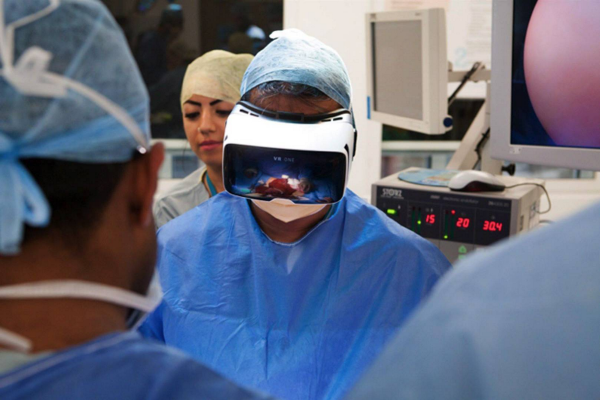F018 Can Bolivia become the global digital health role model? (Shafi Ahmed)
In 2014 something remarkable happened in the area of medical education: thousands and thousands of medical students, professionals, and public from more than 100 countries stepped in the shoes of the surgeon Shafi Ahmed, while he was performing a surgery in London.
The global audience watched the operation live through Shafi Ahmed’s eyes; the procedure was recorded with the camera on Google Glass he was wearing.
The operation was an example of knowledge-sharing on a massive scale; much larger than anything before.
Shafi Ahmed
Up until then, surgeries could be observed mostly through video tapes or if medical students attended an operation as observers. Even then, they could never really see what the surgeon saw. Despite video technologies for live streaming readily available today, we don’t see them as a part of everyday educational practice. Perhaps the need is not significant in developed countries. Developing countries, however, are a different story. This is what makes transmissions like the one described above so significant.
You can find and listen to the discussion with Ahmed in iTunes, Stitcher or Google Play Music.
Despite the seemingly revolutionary potential of Google Glass, the technology didn’t get adopted on a broader scale. In Ahmed’s opinion, Google Glass was before it’s time at launch. “We weren’t ready for it as a society. Virtual reality and augmented reality, however, have better chances of survival,” Shafi Ahmed believes.
Shafi Ahmed during a surgery using a VR set.
He is a leading figure in the world of implementing technologies in everyday practice, not only talking about but actually using all sorts of new inventions. In 2016 Ahmed performed surgery using a VR headset. He offers telemedical consultations. Even when he’s not physically present in the hospital, he is present through avatars and telemedical connections.
Technology introduction, adoption and sustainability
From the general public’s perspective live streaming or online consultations might not seem a big deal in today’s world, where various mobile apps offer online audio and video connectivity. However, these technologies are not in everyday use in medicine (yet…) for various reasons. Yes, they bring convenience to the patient, but may not be the easiest to introduce in clinical practice without a proper incentive for doctors or management of the medical facilities. The most common question is: who will pay for these technologies? The insurance? Hospital? Patient? You don’t only need an enthusiastic doctor, but also an ambitious management or government for adoption.
It took about a week to get all approvals (management, legal department, patient consent, etc.) for the Google Glass surgery, says Shafi Ahmed, who is based in London, UK, working for the NHS. The NHS seems very forward-thinking regarding introducing latest technologies — apart from Ahmed’s example, there’s a close collaboration with the Google’s Deep Mind in ophthalmology, NHS is closely collaborating with the AI-enhanced mobile app Babylon, to reduce the number of unnecessary patient visits in the public system.
Bolivia — the new digital health playground?
Building from experiences in his own environment, accompanied by thoughts and know-how and innovations seen in healthcare systems in other countries, Ahmed is now about to start a big experiment in one of the less developed healthcare markets: Thanks to the invitation of Martin Dockweiler, President of Udabol University Bolivia, Ahmed will lead the new, latest technologies enhanced hospital in Bolivia.
As he explains in the episode 18 of Faces of digital health podcast, the desire is to create a exemplary hospital, which would then be scaled to other locations as well. Latest technologies will be incorporated, staff trained from scratch, work processes designer to encourage collaboration and constant innovation.
This project will indeed be a big test of how sustainable a high-tech hospital be in a low-income country can be. How much can costs be lowered, and what will the business model be to enable sustainability and updates of the rapid technological advancement?
Bolivia has approximately 12 million people, but only 6.3% of the GDP is allocated to healthcare. The question is: Can a country like this become a global digital health role model and how will that be achieved?
The infrastructure of the first hospital in Bolivia should be finalized in early 2019.
You can find and listen to the discussion with Ahmed in Podbean, iTunes, Stitcher or Google Play Music.
Questions addressed in episode 18:
Have you ever undergone surgery? How was it from a perspective of a doctor who is familiar with what needs to be done? Did you choose your doctor yourself?
You used Google Glass in 2014; what happened with it? Did it ever get used in the clinical practice more broadly?
Will augmented reality solutions be used more broadly?
How is NHS, as a public system, funding and embracing new technologies?
How will the latest technologies enhances hospital in Bolivia look like? How will the staff be chosen and trained?
Who will pay for the equipment in Bolivia?
How much will care cost in the new Bolivian hospital — are the majority of patients going to be private patients?


